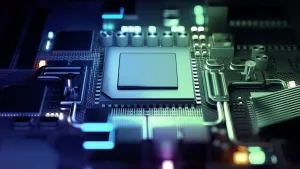
Engineering outsourcing has become a popular solution for companies seeking to develop high-tech products quickly and efficiently. By working with an engineering partner outside the company, companies can reduce time-to-market, avoid risks, and have a better chance of success. However, companies must know the challenges associated with engineering outsourcing before embarking on this path.
In this article, we’ll look at:
A Harvard Business Review article about engineering outsourcing for high-tech product development says, “The days are long gone when a single vertically-integrated manufacturer like Ford or General Motors could design and manufacture all or most of the subassemblies and components it needs to make a finished product. Technology is just too complicated, and it is impossible to possess all the necessary skills in just one place.” More and more companies are choosing to keep their in-house staff focused on their primary business, so they engage an outsourced engineering team to provide technical expertise.
According to a report from Grand View Research, “The global engineering services outsourcing market… is expected to expand at a compound annual growth rate (CAGR) of 22.9% from 2021 to 2028. The increasing collaboration between Engineering Service Providers (ESPs) and Original Equipment Manufacturers (OEMs) is expected to emerge as one of the primary factors contributing to the growth in the adoption of engineering services outsourcing (ESO).”
The need for specialized skills often drives OEMs to partner with our team at Orthogone. For example, a medical device manufacturer with industry-leading image detection needs FPGA expertise to take his products to the next level. They partnered with our team to develop the latest version of their product.
Read the case study about our FPGA design for a highly programmable innovative image processing engine.
In addition to needing specialized skills, companies also need to get their products to market quickly. They can’t wait for a time-consuming talent recruitment process and ramp-up delay for new hires. Companies developing industry-leading innovations work with us to speed product development time.
For example, we partnered with an optical detection and ranging technology company to design the electronics for an automotive LiDAR solution. Through the partnership, we met an extremely tight schedule to meet a product introduction deadline.
Learn more about our solid-state 3D LiDAR with 180 field-of-view project.
Many businesses have realized the cost benefits of using offshore teams for IT or high-tech product development services. However, the IT outsourcing business model is different from engineering outsourcing. Companies can work with an engineering team on a project basis, allowing them to scale up their teams to meet peak requirements. Additionally, the focus has shifted from cost savings as the primary factor in outsourcing and choosing a partner, to finding people with the necessary technical skills, communication, and project management skills, which can make a significant difference in the success of a project.
Building a team that has knowledge and experience takes years and requires investing in continuous education. Innovative product development demands creative thinking in an environment that supports collaboration and nurtures continuous learning. Every team member at Orthogone benefits from the company’s investment in research and development. Learn more about how strategic partnerships drive innovative software product development.
There is no one-size-fits-all model for engineering outsourcing. Every company, team, and project will have its own unique needs. However, there are 3 categories that custom engineering services generally fall into:
1 – Augmenting your in-house staff
With this option, the outsourced team members work side-by-side with your in-house team, either in person at your offices or remotely, with frequent meetings. The augmenting model works well for OEMs with an in-house extensive engineering team and requires specific expertise for a project. By augmenting your in-house team with an engineering services partner, your team members will benefit from knowledge transfer and learn more about the new technology from experienced developers.
Find answers to frequently asked questions in our Custom Engineering Services FAQs
2- Assigning a portion of product development to the outsourcing team. With this option, the outsourcing partner typically provides more input into the project management and design of the product while taking on the responsibility of completing a significant portion of the development. Both OEMs and startups use this model. For OEMS, this option can speed development significantly while leaving their in-house staff available to focus on other priority tasks. For startups with some staff but need help with certain portions of product development, this option can be used at any point in the product development life cycle, for example, to show proof of concept or develop a working prototype.
Learn more about increasing the capacity of your technical team.
3 – Opting for turnkey product development. For some projects, having an outsourcing partner take on the entire project, from idea to manufacturing, makes the most sense. This can happen for a variety of reasons, such as when a startup has a great idea with a time-sensitive market opportunity but doesn’t have the bandwidth to take on the project. For OEMs, sometimes a project is outside the boundaries of the company’s normal operations, so it makes more sense to outsource it completely. Another reason for turnkey product development is when the idea presents seemingly impossible engineering challenges that need experienced developers to manage. Development is still done as a collaborative process, with open communication and input from your company’s experts, but most of the development work is done by the outsourcing partner.
Discover answers to frequently asked questions about Turnkey Product Development.
When considering outsourcing engineering services for high-tech product development, it’s important to keep in mind several potential pitfalls. Firstly, finding an outsourcing partner with the right technical specialization and experience can be challenging. Language or cultural differences may also cause communication problems or misunderstandings, which can impact the quality of work delivered and project delivery times.
The cost of hiring an external provider is another factor that needs careful consideration, as rates will vary depending on the skillset or expertise needed. Companies should conduct thorough research before committing to any agreement to guarantee they receive good value for their money.
Finally, companies must evaluate whether they have enough internal resources to effectively manage and track progress on outsourced projects. Without proper oversight and communication protocols, it can be challenging to stay up-to-date on progress and ensure deadlines are met, especially when working with different time zones or remote teams across diverse countries and continents.
An experienced outsourcing partner can provide a pricing model that meets your needs. Typical options include time and materials and fixed-price contracts. The suitability of these options will depend on the size and scope of the project. Sometimes, both models will be used. For example, if you want to use fixed price terms but don’t have an RFP or specifications, an experienced developer can use the time and materials model to help you define the requirements and specifications for your project. Then, you can use those requirements as the basis for a fixed-price contract.
Whether you need to access people with specific skills, speed development, or scale up your internal team for a special project, custom engineering services outsourcing can be the ideal solution. Our successful work with clients develops into long-term partnerships where we collaborate on multiple projects.
Learn more about the benefits of partnering with a leading engineering company.
If you want to foster innovation, feel free to get in touch with us!


